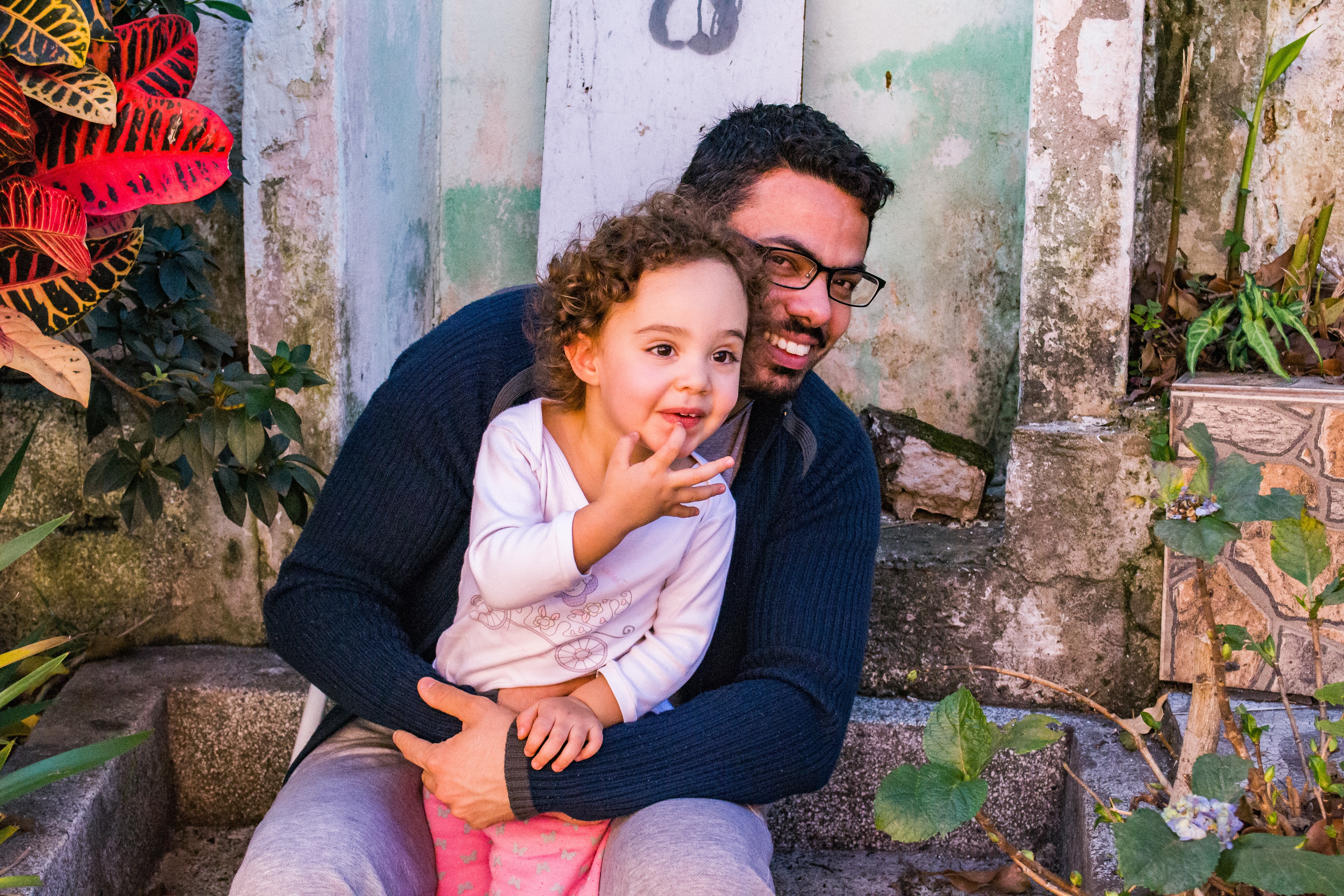


Read the news coverage and op-eds about our Shared Parenting Report Card at the links below:
US News & World Report Report: States Lack Laws to Support Equal Shared Parenting
CBSN New York Report: New York Gets An ‘F’ For Shared Parenting Of Children Of Divorce
Yahoo These Are the Best & Worst States for Shared Parenting, According to a New Report
Fox News National Parents Organization releases ‘report card’ evaluating shared-parenting statutes of each state
Fox News Donald Hubin: We know how to improve life for kids whose parents live apart – Now states need to step up
New York Daily News New York’s a disaster for shared parenting
Oldham Era Shared parenting having a positive effect for families
Tristate Kentucky ranks as best state for shared parenting after divorce
Courier Journal (Kentucky) Kentucky goes from D- to A on Shared Parenting Report Card, making it the best in the US
Hawaii Free Press Hawaii unable to make progress in improving grade for shared parenting efforts
WYMT (Kentucky) National Parents Organization gives Kentucky good score for child custody cases
Canton Rep Commentary: Ohio lags on shared parenting
Worcester Telegram As I See It: Massachusetts failing to make progress on important cause of shared parenting
Public News Service Group Gives Arizona Top Marks for Shared Child Custody Policies
Caller Times What’s in a child’s best interest? Shared parenting.
News-Graphic State taking lead in shared parenting
Kentucky New Era Kentucky puts in work to receive an ‘A’ on 2019 shared parenting report card
Beckley Register Herald GUEST COLUMN: Erosion of the family unit
The Hampshire Review Family court systems need to do change
Kenosha Daily News Shared parenting: Children can’t get enough
Columbus Dispatch Column: Ohio leaders behind times on issue of shared parenting
Pioneer Press Molly K. Olson: Minnesota Legislature can and should do more to protect a child’s relationship with both parents
Topeka Capital-Journal Will Mitchell: Kansas receives C- from NPO on shared parenting efforts
Virginian Pilot Christian Paasch: Parenting progress but not quite perfection
News Press Now Missouri should seek ways to improve family courts
Joe Hunter, a father of six, spoke at the press conference for the release of our Shared Parenting Report Card on September 18, 2019 on the difficulties he faced trying to get shared parenting after his divorce and his hopes for change.


September 30, 2019 by Robert Franklin, JD, Member, National Board of Directors
In Professor Meier’s study of 4,338 family law cases, courts credited mothers’ claims of abuse against fathers 36% of the time, i.e. in 795 out of 2,189 cases.
Meier went on to examine the rate of corroboration of those claims of abuse. Unfortunately, she did so in a way that was essentially guaranteed to overstate the rate at which claims of abuse were corroborated. That’s because she considered every case to be “corroborated” in which a protective order was issued, a man was arrested or was prosecuted.
As close followers of domestic violence law, policy and practice know well, none of that means that DV actually occurred. The mere allegation of domestic violence is usually sufficient to have a man arrested and a protective order issued against him. “No drop” policies by prosecutors ensure prosecution, even when the complainant seeks to withdraw the charge or refuses to cooperate with the state. In short, Meier’s definition of corroboration in no way means that DV occurred, only that she concluded that it did.
So how many corroborated cases were there out of the 4,338 total cases analyzed? Just 599, or about 13.7% of all cases. Given Meier’s expansive definition of “corroboration,” we’d think there’d have been more, but over 86% of cases didn’t even have that. This again brings up the question I’ve asked in previous pieces on Meier’s study: what is the nature of the abuse referred to in the cases reviewed? Surely serious cases of DV involving overt injury would have been corroborated by at least one of the required criteria – protective orders, arrest or prosecution. The remarkably low number of cases with corroborated allegations strongly suggests what the rest of Meier’s data do – that the overwhelming majority of abuse claims allege relatively minor and/or non-injurious incidents.
Interestingly, the study shows that the presence of a guardian ad litem (GAL) or a custody evaluator in a case significantly decreases the chances that a court will credit a claim of abuse. That comes as no surprise. GALs and evaluators have the time and access to families that judges don’t. They’re more able to discern the reality of a family’s dynamics, the likelihood that claimed abuse actually occurred and its impact, if any, on the child who’s the subject of the case. It’s fair then to conclude that, the more actual information a court has about a family, the less likely it is to credit a claim of abuse. That says a lot about those claims.
The core of Meier’s study, and the only thing that warrants further inquiry is the disparity between courts’ responses to mothers and fathers who level charges of abuse against their spouse. When mothers do, they lose custody 28% of the time. When fathers do, they lose custody 12% of the time. That’s a significant difference and suggests a need further study.
There are of course many possible explanations for the disparity other than Meier’s assumption that courts are biased against mothers and in favor of fathers. It may be for example, that mothers tend to too readily allege abuse by fathers and end up complaining of less important incidents. It may be that fathers tend to be more afraid of family courts due to well-known and long-reported bias against them. In that case, they may only bring to the attention of the courts clear incidents of violence by mothers, i.e. those they know they can prove and that have a high probability of gaining them an advantage.
If pressed, I’d say the latter reason explains the disparity in the treatment by courts of allegations of abuse by mothers and fathers, but I’d welcome further analysis to clear the matter up.
As recently as August 15, I wrote a review of Mark Winkler’s book, My Daughter’s Keeper. Interestingly, it is, from start to finish, exactly the type of case Meier bemoans as indicating court bias against mothers. Readers will recall that Winkler’s ex claimed physical and sexual abuse of their daughter by him and a court issued a restraining order keeping him from seeing the girl for two months. Mom got sole, then primary, custody of the child. A GAL and a custody evaluator got involved in the case and, in the end, the court found Mom’s claims to be invalid and made solely to gain an advantage in the custody case. It then transferred custody to Winkler.
So, according to Meier’s categories, a “protective” mother made claims of abuse that were corroborated (by the existence of the restraining order), parental alienation by Mom became an issue, and a court gave custody to an “abusive” father. Remarkably, had Meier included Winkler’s case in her database, her conclusions about the dangers of family courts to mothers and children would be completely wrong. In fact, the claims by the mother were false. In fact, her increasing efforts to alienate the child were abusive. In fact, exactly those conclusions were drawn by the GAL, the evaluator, caseworkers at child protective services and ultimately the judge. Custody of the child was rightly transferred to Winkler. As I said in my review, the system did the right thing, albeit at a glacial pace.
And that highlights the many deficiencies in Meier’s study that all add up to one thing – the devil is in the details. When we ignore those details, when we assume allegations of abuse to be truthful, that all abuse is serious enough to warrant denying children their relationship with a parent, pretend that parental alienation is merely a scheme by abusive fathers to thwart “protective” mothers, we inevitably draw wrong conclusions. The only way to determine if a court erred is to look at those details. But Meier doesn’t. She revealed one area that’s ripe for further study, but beyond that, her study tells us little of value about what courts do or why.
Read Part 1 here.
Read Part 2 here.
Read Part 3 here.
Read Part 4 here.
September 28, 2019 by Don Hubin, PhD, Chair, National Board of Directors
National Parents Organization just published the 2019 NPO Shared Parenting Report Card, and the news for Ohioans isn’t great. The Buckeye state received a middling “C,” the same grade it received in the NPO study five years ago.
That’s no surprise.
In those five years, the Ohio legislature has made no improvements in our laws dealing with post-separation parenting. As a result, Ohio is behind the times; let me count the ways.
First, Ohio legislators have not responded to the research done in the past three decades that provides compelling evidence that in most cases, and absent abuse, children of separated parents do best when parents share as equally as possible in the responsibilities of raising the children. Indeed, surprising many, this research shows that children who are parented equally by both parents living separately do about as well on average as children raised in families where the parents live together. And they do much better than children raised in sole-custody arrangements.
Our statutes, to the degree that they seek to truly promote the best interest of children, should reflect these results.
Read the rest here.
September 28, 2019 by Tony Bickel, National Parents Organization of Wisconsin
As Wisconsinites, we can be proud of how separated Wisconsin parents address and fulfill their financial obligations for their children.
According to the Department of Children and Families website dialog box of current support obligations, Wisconsin parents ranked high compared to all 50 states. Although Wisconsin isn’t at 100% yet, the rate has been trending upward for years now.
Many studies have been done on the value of shared parenting and its positive effects on children, including emotional stability, academic success and significant reductions in drug use and juvenile delinquency.
Recently, the National Parents Organization put out a report card rating each of the 50 states on the prevalence of shared parenting statutes for children with separated parents. Wisconsin received a B-. Although this is above the average, it is a reminder that we must continue to strive for improvement and education on meeting the needs of children in homes without both parents living together.
Read the rest here.


September 30, 2019 by Robert Franklin, Member, National Board of Directors
We need fathers in children’s lives. The epidemic of fatherlessness that’s descended on this country and made itself right at home is the single worst social problem we face. About a third of divorced or separated fathers have no contact with their children. In too many ways to count, that’s bad for kids, bad for dads, bad for mothers and bad for society. Fatherlessness is accomplished in many different ways, from divorce courts to adoption laws to child support laws and to, yes, this (Fox17, 8/21/19).
Nashville native Antonio Davis is a fine and loving father. His two kids will tell you that.
To his son and daughter, Antonio Davis is everything.
His daughter Antonia describes him this way: “By having him as my father, that’s the best thing I could have, and I’m truly lucky to have him.”
That’s great, but just because Davis is everything we’d want a father to be doesn’t mean our system of laws and practices respects him or what he has to offer children.
Eighteen years ago, Davis had a relationship with a woman who goes unnamed in the article. She announced that she was pregnant and that Davis was the father. As we’d expect of a man like Davis, he stepped up and signed a paternity acknowledgement. That meant he was admitting paternity and committing to support the child.
But then Mom disappeared. Before the baby was even born, she left the Nashville area and gave Davis no way of finding her. He searched for her all that time without success until recently. And for all that time, he paid to support a child he had no way of locating, no way of caring for, no way of being a true father to.
And that was probably the idea. Davis is a stand-up guy, exactly the type of man who could be counted on to pay child support regularly. Sure enough, he did just that.
But recently, he located the child and had a DNA test performed. The child isn’t his. Whose it is is known only to Mom and she apparently hasn’t said. But whoever it is, the child has been deprived of a father and Davis has been deprived of the $40,000 he paid out over the years.
“Within 30 days, it was over and done with,” Davis said after paying $500 last year for a DNA test. “I found out I was not the father of the child.”
“I was not relieved at all,” he recalls of his emotions. “I was very, very, very hurt.”…
He says, “It was very, very hard looking for her all these years and then to find out I was not the father. It was a very big roller coaster I had to go up and down on.”
Here’s a man who loves his kids deeply. He spent 18 years searching and yearning for a child he believed to be his. At the end of his search, he learned that it was all for naught. Imagine the pain of that.
Plus of course his chances of recouping any of the money he paid are slim and none. His only recourse is against the mother who likely has little or nothing to satisfy a judgment.
Then there’s the statute of limitations that spells out the time in which a man has to contest paternity. Of course there was no way Davis could have gotten a DNA test sooner than he did, but the statute still applies and that means that most of his outlay is gone forever.
The actual dad? We don’t know who or where he is, but he too has been defrauded. He has a child, but has never seen it take its first steps or heard its first words. He’s never sung it to sleep, never read it “Good Night Moon.” He never will.
Has the child had a father who was there for it during all the trials and tribulations of growing up? We don’t know, but whatever the case, its biology has been unknown to it at least for the first 18 years of its life. Did that interfere with its medical care? It may have, but we don’t know.
This case shows us everything that’s wrong with how we deal with (or don’t deal with) paternity fraud. Not one thing about what we do makes sense either for children, fathers or society. Not one thing can be said to defend a system that allows a mother to deprive a child of its father with no consequences to her.
There are two possible solutions. We can conduct genetic testing on every child at birth or we can legally require mothers to inform every possible father that he has a child. Doing both would be the best plan. But if there is any movement afoot to do either, it’s escaped my notice.
And so we paddle on against the current of everything that’s just, fair and good for kids.


September 29, 2019 by Robert Franklin, JD, Member, National Board of Directors
Professor Joan Meier wants readers of her study to conclude from its findings that family courts are in the throes of a crisis of their own making. That crisis, according to her, is the widespread denial of custody to mothers, even when fathers are abusive and especially when fathers claim mothers to be alienating the children.
The core findings from this study provide strong support for the critiques of family courts’ handling of cases involving mothers’ claims of abuse by fathers. The data show that courts are excessively skeptical of child physical and sexual abuse reports, are likely overly skeptical of domestic violence claims, and sometimes award custody to known abusers. Overall, mothers reporting abuse – particularly child abuse – are losing custody at high rates.
But can we draw those conclusions? Since Meier nowhere attempts to define domestic violence, child abuse or child sexual abuse, what exactly are the cases she included in her study referring to? She calls men accused of DV and those who’ve been found to have committed DV “abusive,” but what does that mean? As I said last time, a person, male or female, who shoves an intimate partner has committed domestic violence, but how concerned about that should we be? Should a child lose that person as a parent simply because of that shove? The Administration for Children and Families reports every year that mothers commit more child abuse and neglect than do fathers. Should they all lose custody?
Plus, just because one person commits domestic violence or child abuse doesn’t mean the other parent didn’t as well, but Meier’s method of gathering data largely ignores the fact. So yes, Dad may have spanked the child, but what did Mom do? Perhaps nothing, but perhaps she’s equally or more abusive. Whatever the case, Meier’s data fail to let us know.
Finally, does the study reveal a crisis in family courts? Let’s look at Meier’s findings.
Recall that she used 4,338 cases drawn mostly from appellate court decisions. In about 954 of those, mothers claimed some sort of abuse by fathers and 41% (about 391) of those were “credited” by the courts. In other words, in 59% of those cases, mothers failed to produce sufficient evidence of their claims to warrant a finding of abuse. Is that the looming crisis Meier makes out or is it judges doing their job, i.e. not denying to children relationships with their fathers based on little or no evidence?
Custodial mothers lost custody about 28% of the time when they claimed the father was abusive, even if he didn’t claim parental alienation. Again, Meier finds this to be sinister, but is it? In how many of those cases did Dad say Mom was abusive? The study doesn’t say. In how many of those cases did the court find that Mom’s claims were unfounded and made to gain an advantage in the custody battle? The study doesn’t say. Those are of course issues that are entirely pertinent to the question of whether courts are erring in their treatment of abuse claims, but the study takes no interest in them.
Indeed, Meier makes no effort to find out why those mothers lost custody, an inquiry that many people would find germane to the issue. After all, if Mom is truly unfit to care for the child, maybe she should lose custody, irrespective of her claims against Dad.
The core of Meier’s claims is that fathers are using allegations of parental alienation against mothers to wrest custody from them. So it’s worth noting that claims of alienation – by all parents – were made in just 669 cases, or about 15% of the total.
In just 163 cases did mothers claim abuse by fathers who then countered with a claim of PA. Of those, 81 resulted in a change of custody from Mom to Dad. So what Meier’s alleges to be a major problem with family courts actually occurred in 1.8% of the cases she studied. And again, as she herself admitted, Meier has no evidence to suggest that judges are wrong in the calls they’re making. So is there a problem?
The closest Meier gets to a real issue is the fact that, in her sample, when fathers alleged parental alienation by mothers, there’s a change in custody from her to him 44% of the time, but when mothers allege the same, courts change custody from him to her only 28% of the time. But of course the devil is in the details. Not all alienating behavior is equal or equally bad. Without specific information on who did what, it’s again impossible to say whether judges are getting it right or not.
Then there’s the matter of gender parities. According to Meier’s own figures, when courts find that claims of alienation are founded, mothers and fathers are treated equally. Needless to say, that tends strongly to undercut Meier’s pique about the 44%/28% disparity I mentioned in the paragraph above.
Plus, there were more cases in which there was a claim of PA but not one of DV than vice versa. Meier, to her credit, notes that that fact, plus the obvious neutrality of the courts in dealing with PA claims, strongly support the conclusion that claims of PA aren’t a matter of the sex of the person making the claim.
I’ll have more to say about the Meier study next time.


September 28, 2019 by Robert Franklin, JD, Member, National Board of Directors
Last time I pointed out that the author of the study on which the Washington Post article is based, law professor Joan Meier, claimed that “fathers have been winning far more than mothers for decades and that joint custody or shared parenting is already the overwhelming norm in state family courts.” There is of course no data to back up those transparently untrue claims and much to refute them. Still, it’s valuable, when assessing the validity or lack thereof of a person’s study, to know their mindset.
So Meier and colleagues set out to learn what happens in family courts when a mother claims, in the course of custody proceedings, that a father has been abusive, either to her or the child or both. They also wanted to know to what extent counterclaims by fathers of parental alienation by mothers affected case outcomes.
They relied exclusively on published case opinions – 4,338 in total – 84% of which were appellate cases.
From the outset, the study is dogged by methodology that likely renders its findings of little or no value. As law professor Nicholas Bala pointed out, when using nearly all appellate cases, Meier, et al automatically introduced selection bias into their sample. Bala called their sample “very skewed.”
Worse, nowhere is “abuse” ever defined. According to the study, apparently all claimed abuse was equal in severity. While domestic violence is never acceptable, no effort was made to differentiate between the most brutal beatings and or verbal abuse, between repeated abuse and a one-time argument in the midst of a divorce. That’s an obviously fatal omission. In minor cases of DV, a judge is right not to permanently deny a child contact with the offending parent. There is a new consensus forming that people who commit acts of domestic violence need to be held accountable, but most importantly help and treatment so they can form healthy relationships.
The Post article said that Meier isn’t saying that judges’ findings about whether or not DV occurred were wrong, but nowhere does that realization, or its consequences for her findings, make it into her write-up of the study.
Worse still is the fact that, unlike abuse, Meier does define parental alienation. Unfortunately, her definition bears no resemblance to the actual definition of PA. Here’s Meier’s:
Parental alienation (or “alienation”), while lacking any universal definition, at its essence, is the theory that when a mother and/or child seek to restrict a father’s access to the child, their claims of dangerousness or harm are not true, but due to the mother’s anger or hostility, or pathology.
Actually, parental alienation is the manipulation of the child by one parent to reject, fear, distrust, etc. the other parent when such feelings are unwarranted by the targeted parent’s behavior. Most importantly, PA is not a gendered phenomenon. Mothers can do it, but so can fathers. The reason we see more mothers accused of PA is that vastly more mothers than fathers have custody of children and are therefore better positioned to alienate the child should they choose to do so. Equalize custody and we’d almost certainly see roughly equal efforts at alienation.
Further, Meier, et al seem not to grasp the fact that, whoever does it, parental alienation is child abuse. Throughout their study, the terms “abuse” and “alienation” are opposed as if the latter were not a form of the former. But mental health professionals who deal with alienation cases know full well the extremely deleterious effects on children, particularly very young ones, of PA. If Mom claims Dad abused little Andy or Jenny and Dad responds by saying Mom is alienating them, both are claiming child abuse. But Meier and those she had coding the cases didn’t code PA as abuse.
In short, Meier’s study is fatally deficient as a guide to whether judges are generally getting matters wrong when one parent claims spousal or child abuse and the other PA. Especially given that there’s no attempt to ascertain whether the judges’ findings were accurate or not, and with no information regarding the seriousness of the abuse claimed, it’s impossible for Meier to say whether we should be concerned or not about judges’ actions. She clearly thinks we should be and has recruited Post writer Samantha Schmidt to her cause, but the truth is that no one can rely on her study to draw the conclusions she seems to prefer.
Next time, we’ll look at some of Meier’s numbers and perhaps be more able to decide whether there’s a problem in the way courts handle claims of abuse and PA or not.
Read Part 1 here.
Read Part 2 here.

 September 27, 2019 by Robert Franklin, JD, Member, National Board of Directors
September 27, 2019 by Robert Franklin, JD, Member, National Board of Directors
Last time I began discussing an article in the Washington Post that makes the remarkable claims that (a) claims of domestic violence, child physical abuse and child sexual abuse by mothers result in their losing custody to abusive fathers and (b) much of that comes about due to fathers’ allegations of parental alienation that is a “controversial claim.” For the most part, Post writer Samantha Schmidt reports those claims unquestioningly. Her sole “balance” consists of a quotation from law professor Nicholas Bala who points out that the study that’s the article’s raison d’être relies on selection bias to make its claims.
Now, that fact alone should be enough to render the study questionable at best. I’ll say more about the study in a future piece, but for now I’ll only point out that it was conducted by law professor Joan Meier who’s not only long been a frank enemy of fathers maintaining meaningful relationships with their children following divorce, but is willing to make some quite astonishingly untrue claims in order to do so.
Back in December of 2017, Meier wrote a letter to the editor of the Washington Post in which she said,
The reality is that fathers have been winning [custody] far more than mothers for decades and that joint custody or shared parenting is already the overwhelming norm in state family courts.
Seriously, she said that. In writing. Never mind that there’s literally no serious evidence for anything she said. Never mind that the best study ever done of court decisions when compared with parents’ requests in court, Maccoby and Mnookin’s Dividing the Child, found that courts grant mothers’ requests for custody at four times the rate of fathers.
And never mind the surveys in which judges and lawyers alike frankly acknowledge the pro-mother bias of family courts. And never mind the data from, for example, the states of Washington, North Dakota and Nebraska that show far, far greater rates of maternal custody than paternal.
For 26 years, the U.S. Census Bureau has tracked who gets custody of children and who doesn’t. In 1993, maternal custody stood at 84%. Today it’s 81%. But according to Meier, “fathers have been winning far more than mothers,” and have done so “for decades.” Strange how the Census Bureau never picked up on that.
In short, Meier doesn’t exactly obscure her agenda. Despite the fact, the Post’s Schmidt channels her claims with virtually no questions asked. That’s too bad because Meier’s claims are nothing if not questionable.
So, for example, Schmidt barely notices the difference between claims of abuse and actual abuse. Students of the custody wars in family courts well know that claims of abuse, whether true or not, are sometimes deployed solely to gain an advantage. But time and again, both Schmidt and Meier (whom she liberally quotes) make no mention of whether the claims of abuse made by mothers were true or not.
When the claim is that judges insufficiently credit mothers’ claims of abuse, one would think that the issue of whether those claims are true or not would be important, but they seem not to be to Meier and barely so to Schmidt. Buried far down the page we find this:
Meier acknowledged that the findings do not demonstrate that courts’ denials of abuse claims were wrong — only that they are happening at very high rates.
That of course raises the salient point: if the courts denying claims of abuse were getting it right, then what’s the problem? It’s a question neither Meier nor Schmidt can answer. Remarkably, neither even tries.
And, as Prof. Bala pointed out, Meier makes no effort to distinguish between types of abuse claimed. So a push or shove rates the same in her study as a fatal stabbing. Needless to say, that failure on her part casts serious doubt on her thesis that courts’ pro-dad stance ends up hurting kids. Over the years, we’ve adopted some very expansive definitions of what constitutes domestic violence. Needless to say, violence is no way to solve familial problems, but what neither Meier nor Schmidt addresses is what sorts of abuse should be sufficient to deprive a child of a parent. Should Mom pushing Dad one time suffice to separate her from her child? What if Dad tries again and again to get Mom to curb her spending? Few would say ‘yes,’ but what Meier’s answer remains a mystery.
Read Part 1 here.